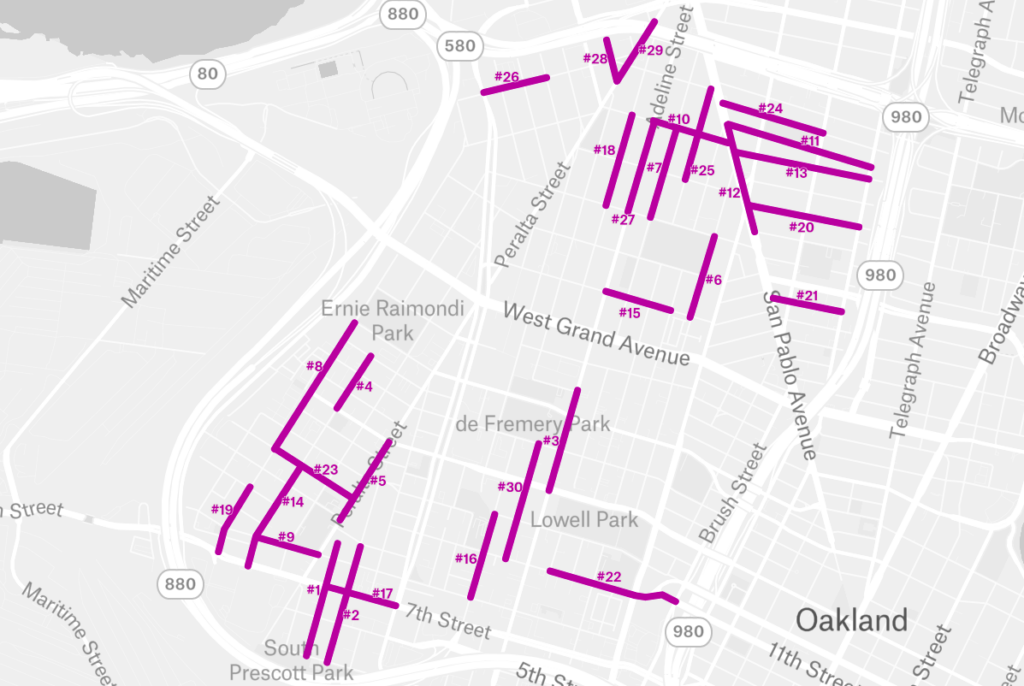Those who live, work, and move around in West Oakland deserve safer, more accessible sidewalks. Oakland’s Department of Transportation (OakDOT) has state funding through the California Air Resources Board’s Sustainable Transportation Equity Project to repair up to two miles of West Oakland’s sidewalks, beginning in late 2024. WOEIP is working with the City to generate a community-driven list of prioritized sidewalk locations to ensure repairs are effective and connective for the people who rely on them most.
West Oakland sidewalk repair is an equity issue
Damaged sidewalks in West Oakland make it hard — sometimes impossible — for people to get around. This is especially true for people with certain disabilities, or those who use canes, walkers, or other assistive mobility devices.
Missing or inadequate ramps

Tree root damage

Cracks and gaps

Narrow or missing sidewalks

150+ sidewalk locations identified by the community
Through a series of workshops, community events, and online mapping exercises, West Oakland residents and sidewalk users have compiled a list of more than 150 locations throughout the neighborhood that need repairs or improvements.
Prioritizing equitable repairs
How do we ensure that OakDOT tackles the most critical locations? WOEIP and its technical partner, Hyphae Design Labs, have analyzed the submitted locations and prioritized recommendations for the City using more than a dozen criteria. Some of these include:
- Focusing on sidewalks within the West Oakland Community Action Plan’s seven Impact Zones (West Oakland neighborhoods with higher air pollution-related health risks)
- Considering a sidewalk’s proximity to high-need sites, such as senior, disabled or low-income housing, schools, playgrounds, and healthcare facilities
- Site exposure to air pollutants
- The presence of owner-occupied homes
- OakDOT’s Geographic Equity priority ranking
Of the 150+ identified locations, we have flagged more than one third of them for recommendation as a prioritized repair. That list has been provided to OakDOT, so they can start working. Recommended areas include:

We’re excited to track the progress of the City’s repairs as they begin in late 2024.
Want to know more?
For project details, questions, or to share your feedback directly, email Meet Panchal.
In partnership with:

This work is made possible with funding from:


Oakland’s Department of Transportation is repairing sidewalks through a Sustainable Transportation Equity Project (STEP) grant funded by the California Air Resources Board (CARB). The West Oakland STEP grant aims to improve transportation equity in West Oakland by centering the community’s lived knowledge and expertise in transportation projects. STEP is part of California Climate Investments, a statewide initiative that puts billions of Cap-and-Trade dollars to work reducing greenhouse gas emissions, strengthening the economy, and improving public health and the environment — particularly in disadvantaged communities.